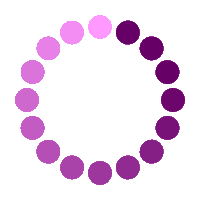- Goldwell
- Koulutus
- Hair Science
- VÄRITEORIA
- VÄRI & KIILTO
VÄRI & KIILTO

VALON TAITTUMINEN
Valo sisältää säteitä, joilla on eri aallonpituuksia ja jotka muuttuvat näkyviksi vain prisman avulla. Prisma hajottaa valkoisen valon punaisen, oranssin, keltaisen, vihreän, sinisen ja violetin väreihin.

VALON HEIJASTUMINEN
Kun valo kohtaa pinnan, se joko heijastuu siitä tai imeytyy siihen väristä riippuen. Valkoinen pinta heijastaa värillisen valon koko spektrin, kun taas musta pinta ei heijasta mitään, vaan imee valon itseensä. Kun valo kohtaa värillisen pinnan, se osittain heijastuu siitä ja osittain imeytyy siihen. Silmä ja aivot aistivat tämän heijastuneen eli ”ei-imeytyneen” valon värinä.

KIILTO
Kiilto on pinnasta heijastunutta vaaleutta tai kirkkautta. Mitä sileämpi ja tasaisempi pinta, sitä intensiivisempi kiilto. Esimerkki: vanha auto, jonka maali on haalistunut, näyttää himmeältä, kun taas uuden auton maalipinta kiiltää. Sileä pinta pystyy myös heijastamaan valoa suunnatusti, kun taas epätasainen pinta hajottaa eli poikkeuttaa sen.
TIESITKÖ MUUTEN, ETTÄ…
Hius voi heijastaa valoa sekä ulkopinnaltaan että sisäpuolelta. Tästä puhutaan tarkemmin kappaleessa Hiusväri.
COLOR WHEEL

COLOR WHEEL
PRIMARY COLORS
The color wheel is the centre of the color sphere. It is the principle on which all color theory is based and includes primary, secondary and tertiary colors.
Primary colors are the fundamental or basic colors that can’t be produced by mixing: yellow, red and blue (also known as Cyan-Blue, Yellow and Magenta-Red). These colors can be mixed to produce every other color found in nature, or secondary colors.

COLOR WHEEL
PRIMARY AND SECONDARY COLORS
Secondary colors can be found in-between primary colors on the color wheel and are made by mixing two primary colors in equal proportions.
Secondary colors are orange, violet and green.

COLOR WHEEL
PRIMARY, SECONDARY AND TERTIARY COLORS
Tertiary colors are created by combining equal portions of a primary color with its neighbouring secondary color.
Tertiary colors are red-orange, yellow-green, blue-green, blueviolet, red-violet.
Colors that are opposite of each other on the wheel are called complementary colors.
When mixing opposite or complementary colors, keep in mind that they neutralize each other, meaning that the color will be toned down to a neutral brown.
Get more information about the Goldwell color circles here.
COLOR SPHERE

BISECTED COLOR SPHERE
The color wheel is a part of the color sphere

COLOR SPHERE WITH DARK AND LIGHT POLE
In addition to mixing primary and secondary colors, the color sphere also shows dark colors. All colors and all graduations between black and white can be found on the surface as well as inside the sphere. This is what allows us to clarify the relationships between colors.
BY THE WAY
Color Theory with the Color Sphere is based on a theory first advanced by Johann Wolfgang von Goethe in 1810.
Learn more about Color Theory here.
- Goldwell
- Koulutus
- Hair Science
- VÄRITEORIA
- VÄRI & KIILTO


